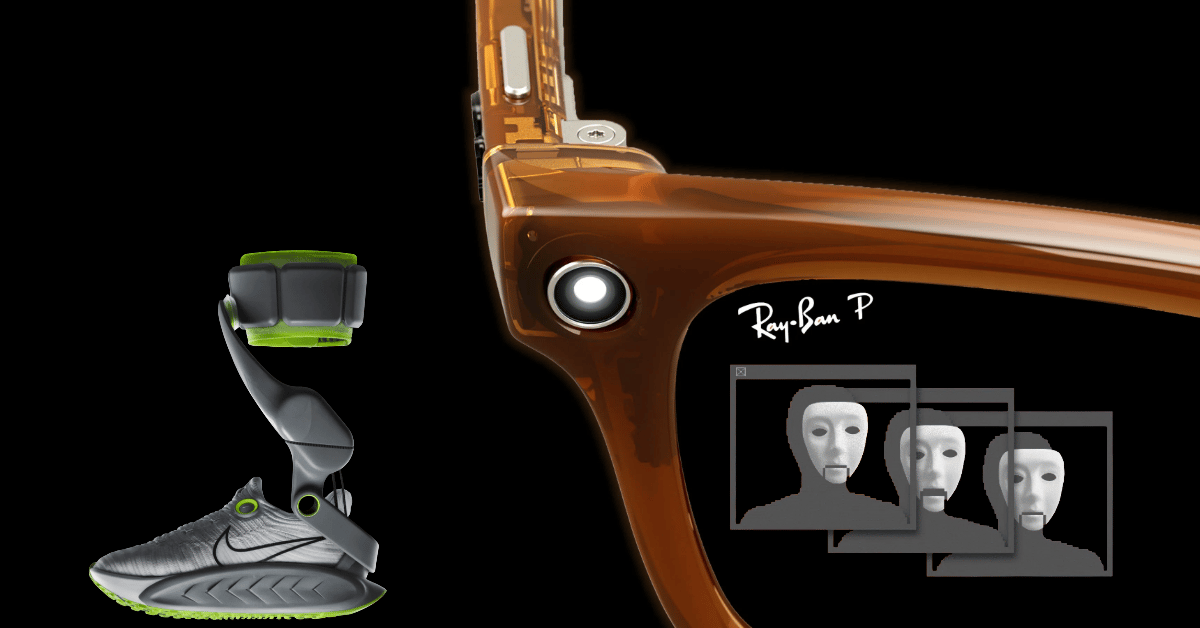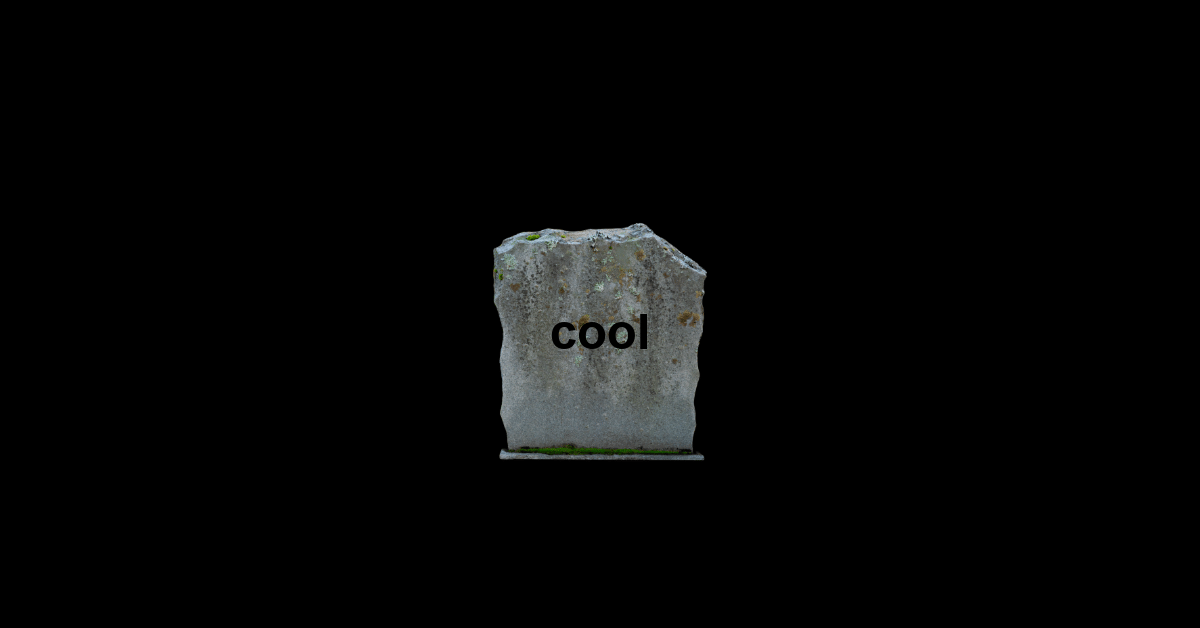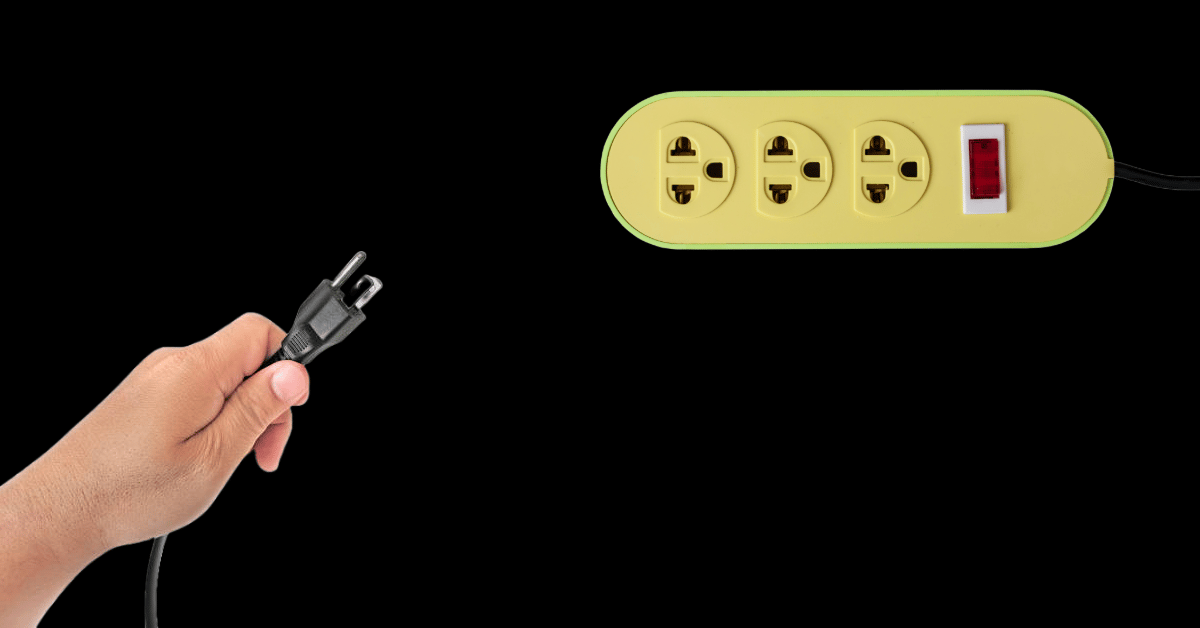
It was the guy in a leather jacket, smoking a Camel, leaning against the wall looking uninterested.
It was the girl with big sunglasses and a DGAF attitude. “Cool” used to mean something. The entire reason anything felt cool was because it looked like rebellion. But now, the second something becomes cool, it’s on all our feeds instantly. The trend blows up, and the it’s-mysterious-and-also-probably-unattainable feeling that made it cool in the first place is gone. Yep, we all killed cool. So as marketers, how do we participate in culture without just chasing every new aesthetic that comes on the scene?
- Charlotte Ellis, Editor ♡
WHAT’S HAPPENING IN MARKETING TODAY?
Meta Ray-Bans can record without you knowing, Nike creates “powered” footwear & Deepfake detection doesn’t work

A $60 mod to Meta’s Ray-Bans disables its privacy-protecting recording light.
Not scary at all. Neither is the fact that with all this very new, potentially dangerous technology, the guardrails seem as loose as my ex's morals after 3 drinks (who said that!???).
Taking advantage of that is a hobbyist name Bong Kim (yes, I’m serious), who modifies Meta’s Ray-Ban smart glasses, disabling the tiny LED that lets people know when you’re filming. All for a quick 60 bucks. It’s a creeper's wet dream. All made possible by, potentially, a creeper himself (I can’t think of any other reason why someone would do this), who, according to 404 media, has a “growing list of customers around the country.” Coolcoolcool.
Nike says its first "powered footwear" is like an e-bike for your feet.
Finally some Future News that doesn’t feel like the world is going to explode at any given second. "Project Amplify" is the world's first powered footwear system. And it’s not intended for running pros. Actually, its purpose is the opposite.
“It’s intended to serve athletes who want to go faster and farther with less effort by giving them more power for everyday movement — in effect, a second set of calf muscles,” Nike said in a press release. It looks like an ankle brace with a motor. Kind of exactly what a robotic walking aid looks like when you picture it in your head. It’s aimed at “athletes” who are running at a roughly 10-to-12-minute mile pace. But I feel it will be of good use to those who are injured or impaired but want to keep up with their fitness.
Sora is showing us how broken deepfake detection is.
Cool, another example of sh*tty ass safeguards on scary ass technology. We know that Sora 2 is terrifyingly good at faking reality and creating realistic deepfakes of literally anyone on the planet. But it seems the safeguards meant to label them as fake are practically invisible. OpenAI is part of the coalition behind C2PA, the tech standard for tagging AI-generated content. But almost no major platform, from TikTok to YouTube, actually shows those tags clearly.
Metadata can be stripped, watermarks erased, and the burden of verification still falls on viewers. In short, Sora exposes how broken our deepfake detection systems really are, and how tech companies keep pretending their half-measures count as accountability. I hate it here.
-Sophie Randell, Writer
Hey, do you like YAP?
If so, why not share it with a friend? The more we grow this thing, the more resources we can put into making it awesome for you. Even if every subscriber invites just 1 person to YAP, we’ll meet our growth goal for 2025. So, you in?
DEEP DIVE
The collapse of cool

Reflecting on the origins of cool, which in my mind, was born at the intersection of artistic expression and political resistance, makes it painfully clear that we’ve lost the entire plot.
Thew away the screenplay.
Tore up the script.
And exited the damn stage.
Cool was once a posture of quiet rebellion, a mix of self-possession and refusal.
Coming from the margins, cool has always been political: jazz musicians refusing to flinch under pressure, punks refusing to play nice, hip-hop turning pain into steeze. It wasn’t a look; it was an attitude.
But in the age of the algorithm, rebellion has been replaced by replication.
Every aesthetic, every microtrend, every ironic in-joke is instantly discoverable, remixable, and infinitely reproducible. What used to signal insider knowledge or defiant individuality now signals nothing at all… because everyone saw it on their For You Page yesterday.
It’s easy to blame capitalism and marketing for killing cool (and we should, partially). But the real betrayal is ours. We wanted the effect of cool without the effort: the vibe without the values, the detachment without the defiance.
Irony killed cool.
Historically, cool meant restraint. A calm refusal to conform. A nod to those who got it. It was about sovereignty.
Now, cool has, in some ways, been redefined by irony. Online, irony is currency, and its most valuable form is chaos. What began as subversive humour has devolved into a culture of chaos; memes, ragebait, contrarianism, absurdity. Irony was once a tool of critique; now it’s an aesthetic strategy.
And brands, naturally, adapted.
Balenciaga’s $1,790 “trash bag” isn’t merely satire but a pre-emptive strike against critique, a product that bakes its own mockery into the price tag. The irony is the product.
When everything’s self-aware, nothing’s sincere and it’s all deeply unserious.
The same posture that once protected art from commercialisation has become the thing that enables it. Ironic detachment has replaced genuine dissent, and we’ve all become complicit in consuming cool’s hollow shell.
Some say we’re entering a new era of earnestness, that caring is cool again (aaaaw.)
The Dazed “State of Youth” report insists that Gen Z’s version of cool is about “authenticity, alignment, and intention.” Kyle Chayka wondered in The New Yorker if “millennial sincerity is tiptoeing back into fashion.”
And sure, that sounds nice. But sincerity has already been commodified too. The “purpose-led” brand playbook, the “authentic creator economy,” the “I actually love this product” TikTok trend. All of it runs through the same commercial pipeline.
The sincerity cycle can’t save us, because the cycle itself is the problem.
Cool used to evolve dialectically: counterculture reacting to culture, sincerity following irony, rebellion following conformity. But now, everything happens at once. Every countermove is instantly monetised. Every rebellion has a merch drop. Every cultural swing is a brand strategy deck waiting to happen.
The pendulum hasn’t just sped up—it’s collapsed.
The internet didn’t democratise culture so much as it flattened it.
When every niche is immediately accessible, when taste can be optimised for engagement, subculture stops being sub-anything.
Cool once relied on context, like who you were, where you found it, how early you knew. But in the attention economy, context is irrelevant.
The irony is that the same systems that made it easier to discover what’s cool also made it impossible for anything to stay cool. The second something trends, it’s already over. What was once a whisper between insiders is now a loudspeaker for the masses.
As a result, cool has become a set of aesthetic gestures divorced from meaning.
It's a palette of references without rebellion, irony without intent, “vibes” without values.
So, what’s left after cool?
If irony has lost its bite, and sincerity its meaning, maybe the next iteration of cool won’t look like either. Maybe it’s opacity, things that resist explanation, optimisation, or commodification. Maybe it’s care that isn’t public, taste that isn’t shared, belonging that isn’t broadcast.
For marketers, that means rethinking what cultural participation even looks like.
Instead of chasing the next cool aesthetic, maybe the real opportunity lies in creating space for subculture to regenerate, not harvesting it the second it freaking emerges.
That could mean:
Designing for depth, not reach. Build smaller, weirder communities where people can actually experiment without the algorithm flattening them.
Leaving things unexplained. Stop translating everything into brand language; mystery invites meaning.
Investing in patience. Cool used to require time, to gestate, to spread, to be discovered. Let it.
Because if everything is visible, nothing feels vital.
And maybe, just maybe, the only way to make something feel cool again is to make it a little harder to find. Go figure.
-Sophie Randell, Writer
TREND PLUG
"The Bronx? The World."

This one's for those out there who see their people, and for identifying the uniting things that bring us all together <3
This sound comes straight out of Victoria's Secret latest fashion show. Law Roach and Indya Moore shared an exchange on the red carpet that puzzled the whole internet. First, Law told Indya, "and we from the same place." Then Indya goes "The Bronx?", and Law goes "The world."
Tiktokers have taken the sound and RUN with it, with each video getting more and more specific. My fav examples include:
How you can jump on this trend:
Using the sound, talk about a scenario where you met someone who has the same values or is from a similar place/ culture.
A few ideas to get you started
When I meet someone who also schedules posts but forgets to post their own
When I meet another marketer who also uses memes as a coping mechanism
When someone else also builds their whole personality around caffeine and deadlines
- abdel khalil, brand & marketing executive
FOR THE GROUP CHAT
😂 Yap’s funniest home videos: Baby vibe check
✨Daily inspo: It will all work out
🎧Soooo tingly: Bubble slicing ASMR?
🍝What you should make for dinner tonight: Red Curry Wonton Soup!
ASK THE EDITOR

If we want to mix Reels and, carousel and static posts, what's the best way to do so? – Jackie
Hey Jackie!
Whatever format you're using, whether it performs or not will come down to your storytelling. Even in carousels and static posts, a strong narrative structure—setup, conflict, resolution—should be there. Especially for carousels, you need to tell a story that makes people have to scroll all the way to the end. When your audience does this, it signals to the algo that people are engaged with that content.
For carousels and static posts, the images you use also play a big role in whether the content will be successful. These need to not only grab the audience's attention but also tell an engaging story. Whether you use static posts or Reels will come down to your brand and what you're trying to achieve. But either way, story wins.
- Charlotte Ellis, Editor ♡
Not going viral yet?
We get it. Creating content that does numbers is harder than it looks. But doing those big numbers is the fastest way to grow your brand. So if you’re tired of throwing sh*t at the wall and seeing what sticks, you’re in luck. Because making our clients go viral is kinda what we do every single day.